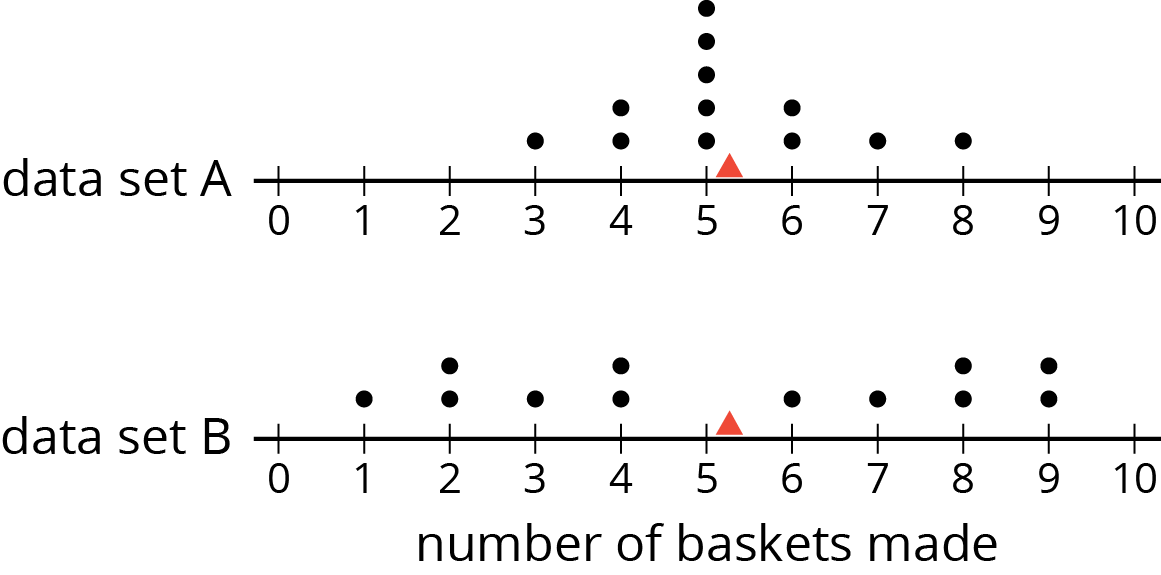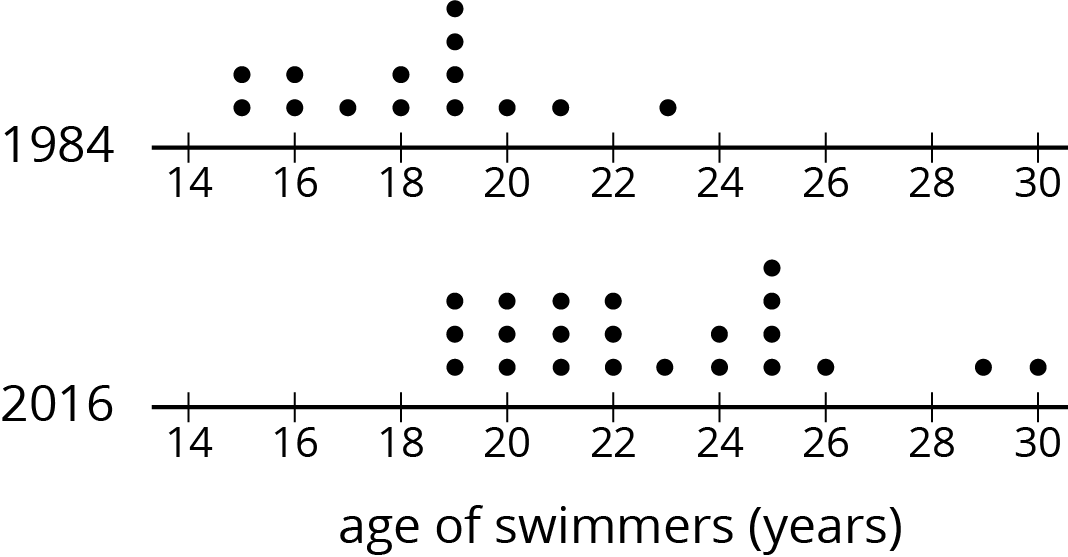12.1: Number Talk: Decimal Division
Find the value of each expression mentally.
42\div12
2.4\div12
44.4\div12
46.8\div12
Let's use mean and MAD to describe and compare distributions.
Find the value of each expression mentally.
42\div12
2.4\div12
44.4\div12
46.8\div12
Andre and Noah joined Elena, Jada, and Lin in recording their basketball scores. They all recorded their scores in the same way: the number of baskets made out of 10 attempts. Each collected 12 data points.
Andre’s mean number of baskets was 5.25, and his MAD was 2.6. Noah’s mean number of baskets was also 5.25, but his MAD was 1.
Here are two dot plots that represent the two data sets. The triangle indicates the location of the mean.

| eighth‐grade student | 6 | 5 | 4 | 7 | 6 | 5 | 7 | 8 | 5 | 6 | 5 | 8 |
|---|---|---|---|---|---|---|---|---|---|---|---|---|
| distance from 6 |
Invent a data set with a mean of 7 and an MAD of 1.
In 1984, the mean age of swimmers on the U.S. women’s swimming team was 18.2 years and the MAD was 2.2 years. In 2016, the mean age of the swimmers was 22.8 years, and the MAD was 3 years.
Here are dot plots showing the ages of the women on the U.S. swimming team in 1984 and in 2016. Use them to make two other comments about how the women’s swimming team has changed over the years.

Sometimes two distributions have different means but the same MAD.
Pugs and beagles are two different dog breeds. The dot plot shows two sets of weight data—one for pugs and the other for beagles.

We can say that, in general, the beagles are heavier than the pugs. A typical weight for the beagles in this group is about 3 kilograms heavier than a typical weight for the pugs.
The variability of pug weights, however, is about the same as the variability of beagle weights. In other words, the weights of pugs and the weights of beagles are equally spread out.